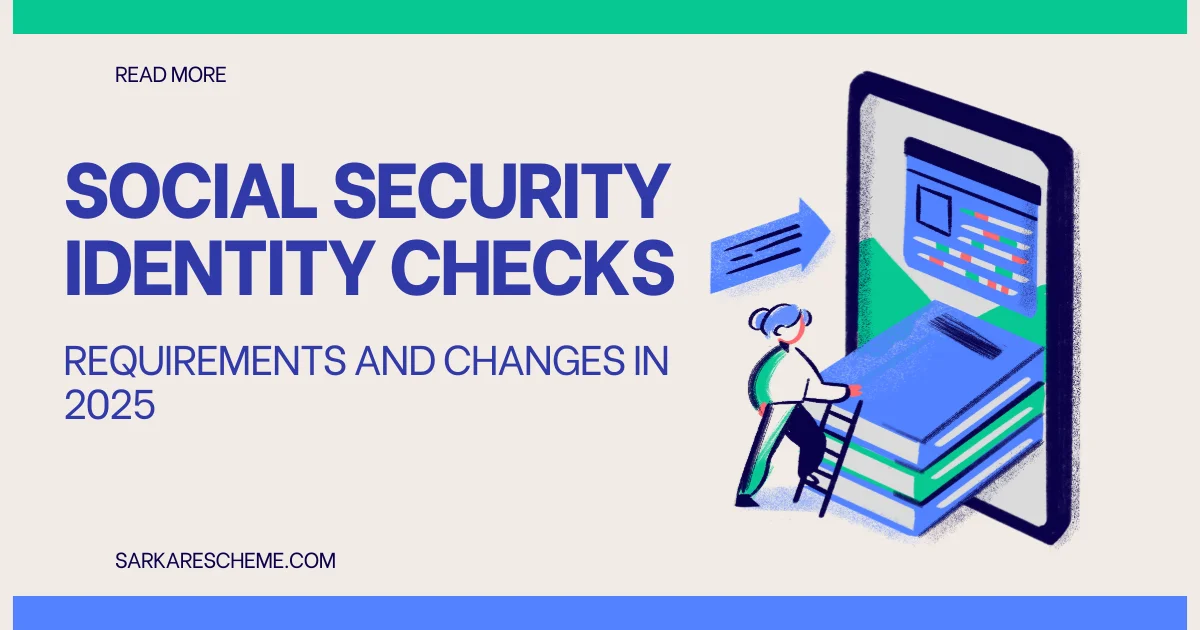How Social Security Identity Checks Help Prevent Fraud and Ensure Trust
In a world where identity theft and digital fraud are constantly on the rise, safeguarding sensitive information has never been more critical. One key tool in this defense is social security identity checks, which help confirm the legitimacy of an individual’s identity by verifying that their Social Security Number (SSN) matches their name and other personal details. Whether you're an employer hiring new talent, a financial institution opening new accounts, or a government agency disbursing benefits, conducting accurate social security identity checks can prevent costly errors and protect both people and organizations from fraud. In this guide, we’ll explore what these checks are, why they matter, and how to implement them effectively, with real-life examples, actionable tips, and insights into overcoming common challenges.
What Are Social Security Identity Checks?
Social security identity checks are the process of verifying that an individual’s SSN corresponds correctly with their name and date of birth. This verification is essential in ensuring that people are who they claim to be. Employers use these checks to ensure eligibility for employment, while banks, insurance companies, and other institutions rely on them to reduce fraud risks. The Social Security Administration (SSA) provides tools like the Social Security Number Verification Service (SSNVS) and the Consent Based SSN Verification (CBSV) system, which allow authorized entities to validate this sensitive information. The purpose of these checks is not just compliance, but also security—both for businesses and for the individuals involved.
Why Social Security Identity Checks Are Crucial in Today’s Landscape
The consequences of failing to verify identities properly can be devastating. According to the Federal Trade Commission, identity theft cases affected more than 1.1 million people in the U.S. in 2023. Social security identity checks play a vital role in detecting mismatched or fraudulent identities before they can cause harm. For example, a major retailer faced a data breach due to hiring employees with false SSNs, resulting in legal penalties and loss of public trust. Whether it's preventing fraud, complying with legal standards, or simply maintaining accurate records, implementing thorough social security identity checks helps mitigate significant risks.
Common Pain Points and Mistakes in Social Security Identity Verification
Despite the importance of social security identity checks, many organizations face challenges in executing them effectively. Common issues include clerical errors like typos or outdated records, which can lead to verification mismatches. Additionally, small businesses may lack access to proper verification tools or misunderstand regulatory requirements. For individuals, name changes due to marriage or divorce can also cause discrepancies if not updated with the SSA. These problems can delay hiring, impact benefit delivery, or even flag individuals for identity fraud investigations. Understanding these challenges is the first step toward building a more reliable process.
Actionable Strategies for Effective Identity Checks
Improving the accuracy and efficiency of social security identity checks requires a proactive approach. First, always use authorized tools such as the SSA’s SSNVS or CBSV platforms for verification. These are the most reliable sources for real-time validation. Second, ensure that all data input—especially names and SSNs—is reviewed for accuracy before submission. Even small mistakes can trigger mismatches. Third, provide regular training for HR, compliance, and administrative staff to stay current on verification procedures and privacy laws. Finally, consider integrating advanced verification systems that use artificial intelligence and cross-referencing with multiple databases. These tools can provide instant feedback, reduce errors, and ensure compliance with data protection regulations.
Technology’s Role in Modern Identity Verification
Technology is revolutionizing the way social security identity checks are performed. Automated systems now allow for instant, real-time SSN verification, which drastically reduces the time and effort involved. Many companies have adopted API-based identity verification solutions that automatically cross-check SSNs with both public and private data sources. For example, a fintech startup that integrated such a solution saw a 60% reduction in onboarding time and a 40% drop in fraudulent applications. This shift towards digital verification not only improves accuracy but also enhances the customer experience by making processes faster and more seamless.
Conclusion
Social security identity checks are a foundational part of identity verification that benefit both individuals and institutions by preventing fraud, ensuring compliance, and building trust. As fraud tactics evolve and regulatory demands tighten, it’s essential to adopt robust verification strategies and technologies. Whether you’re managing a small business, operating a financial institution, or applying for government benefits, making social security identity checks a standard practice will protect your operations and contribute to a safer, more reliable digital ecosystem.
FAQs
Ques. What exactly is verified during a social security identity check?
Ans. The process confirms whether an individual’s SSN matches their legal name and date of birth, using official SSA records or trusted verification platforms.
Ques. Are employers required to perform social security identity checks?
Ans.Yes, under federal law, employers must verify the identity and employment eligibility of new hires, often using SSN-based systems as part of the process.
Ques. What are the risks of skipping identity checks?
Ans.Skipping these checks can result in fines, data breaches, hiring ineligible employees, and exposing your organization to fraud or regulatory penalties.
Ques. How do individuals correct mismatched records?
Ans.Individuals can contact the Social Security Administration to update their personal information and correct any errors that might affect verification results.
Ques. Can technology really improve social security identity checks?
Ans.Absolutely. Advanced tools and real-time verification systems help reduce human error, improve accuracy, and flag suspicious activity more efficiently than manual methods.


Comments
Post a Comment